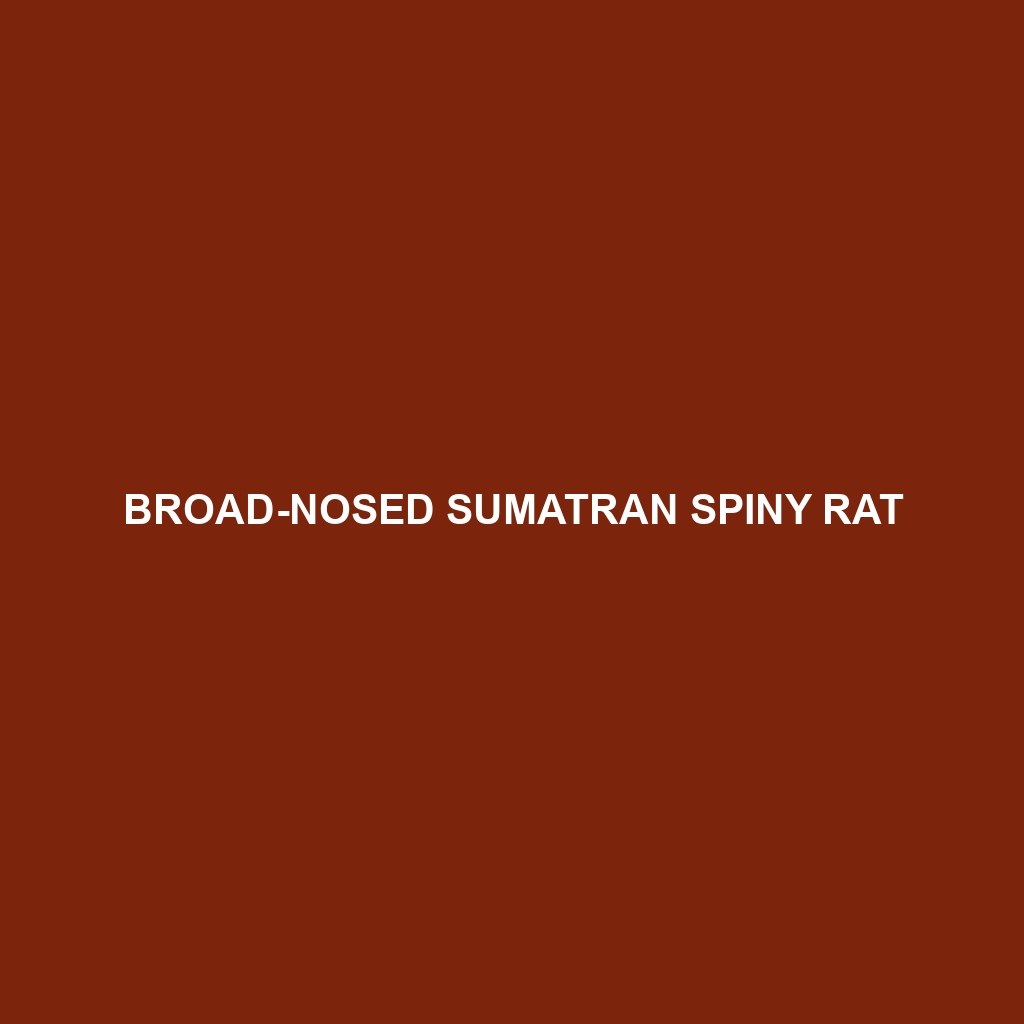Broad-nosed Sumatran Spiny Rat
Common Name: Broad-nosed Sumatran Spiny Rat
Scientific Name:
Habitat
The Broad-nosed Sumatran Spiny Rat is primarily found in the lush rainforests of Sumatra, Indonesia. This species thrives in undisturbed lowland tropical forests and is often associated with dense understory vegetation. They occupy areas with high humidity and abundant foliage, which provide both shelter and food resources.
Physical Characteristics
This unique rodent is characterized by its broad, flattened nose, a significant feature that distinguishes it from other species. Adult Broad-nosed Sumatran Spiny Rats typically measure between 25 to 30 centimeters in length, including their long, scaly tails. The fur is coarse and bristly with a coloration that ranges from dark brown to gray, often interspersed with lighter patches. Notable features include its prominent spines along the back, which provide a level of protection from predators.
Behavior
The Broad-nosed Sumatran Spiny Rat is primarily nocturnal, exhibiting increased activity during the night. They are known to be solitary creatures but may occasionally be seen foraging in pairs. These rodents are excellent climbers, often seen taking advantage of vertical spaces in trees and shrubs to escape predators or to find food. Their communication includes a series of squeaks and whistles, especially during mating rituals.
Diet
The diet of the Broad-nosed Sumatran Spiny Rat mainly consists of fruits, seeds, and roots. They are known to play a pivotal role in the forest ecosystem by dispersing seeds through their foraging habits. This rodent has developed a preference for certain fruits native to the Sumatran rainforest, making them an important agent in the propagation of various plant species.
Reproduction
Broad-nosed Sumatran Spiny Rats have a specific breeding season that typically occurs during the wetter months. Females give birth to a litter ranging from two to four young, after a gestation period of about 30 days. The offspring are weaned after several weeks and become independent shortly thereafter, although they often remain in close proximity to their mother.
Conservation Status
Currently, the Broad-nosed Sumatran Spiny Rat is listed as vulnerable on the International Union for Conservation of Nature (IUCN) Red List. The primary threats to its habitat include deforestation, logging, and agricultural expansion, which have significantly reduced their natural living spaces.
Interesting Facts
One fascinating fact about the Broad-nosed Sumatran Spiny Rat is its ability to regenerate its quills when they shed them, a remarkable trait not commonly found among mammals. Additionally, this species may exhibit social behaviors rarely seen in other rats, such as grooming and mutual foraging.
Role in Ecosystem
The Broad-nosed Sumatran Spiny Rat plays a crucial role in its ecosystem as a seed disperser, helping to maintain the health and diversity of the rainforest. By feeding on various fruits and seeds, they contribute to plant reproduction and forest regeneration, making them an integral part of their habitat’s ecological balance.
